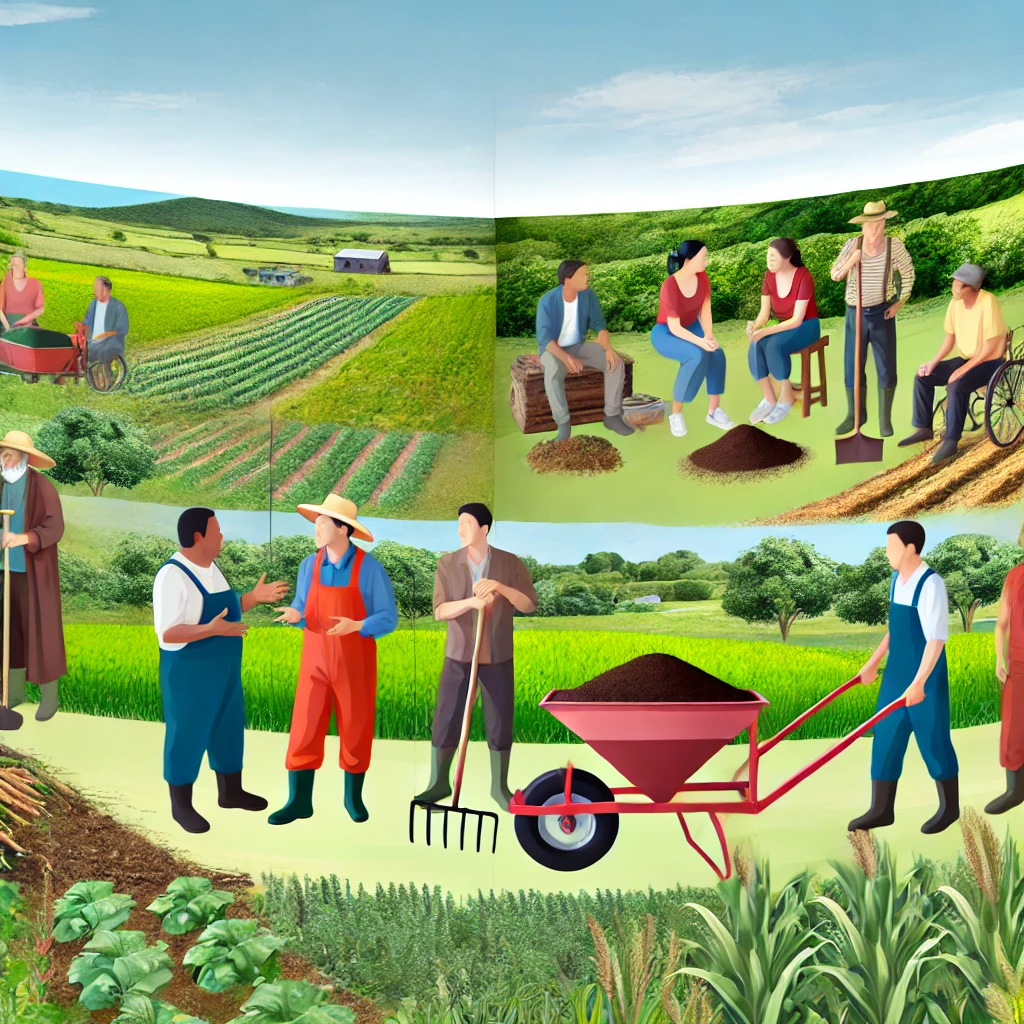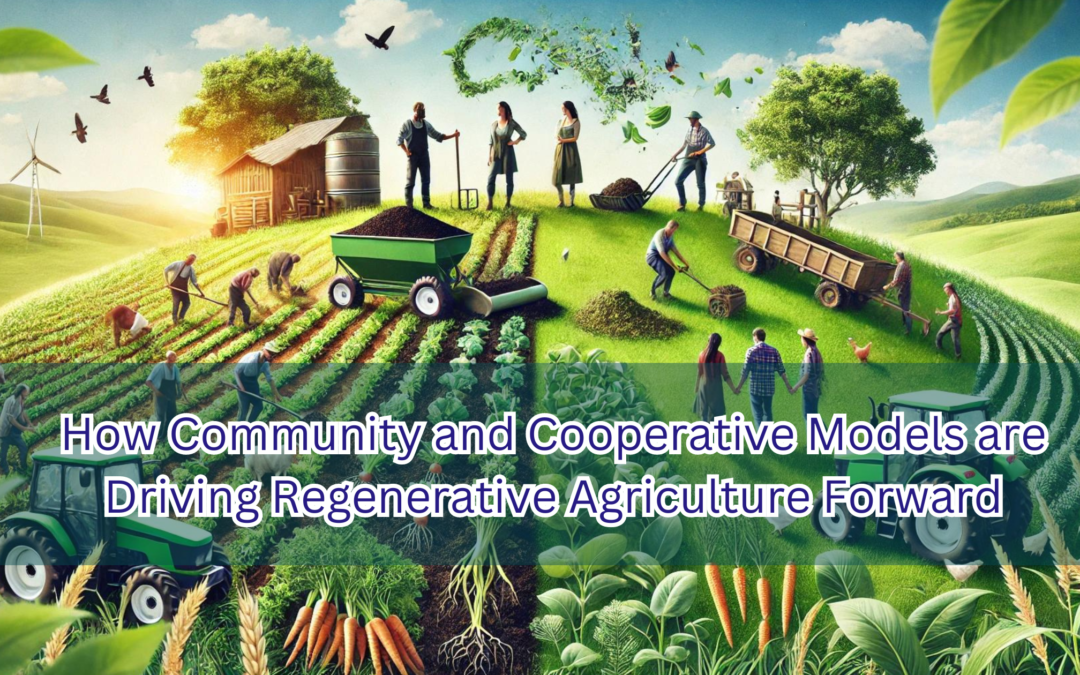Regenerative agriculture is all about creating healthy soils, resilient ecosystems, and sustainable food systems. But making the shift to these practices can be challenging, especially for small-scale farmers. That’s where community and cooperative models come in. These approaches empower farmers to share resources, knowledge, and market access, giving them the tools and confidence they need to thrive.
Let’s explore how community and cooperative models are helping drive the regenerative agriculture movement forward.
1. Sharing Resources for Regenerative Agriculture
One of the biggest challenges for small-scale farmers interested in regenerative agriculture is the cost of new equipment, seeds, and infrastructure. Cooperative models help solve this problem by allowing farmers to pool their resources and purchase essential tools at a lower cost. By working together, they can access high-quality regenerative inputs, like cover crops, organic compost, and low-impact machinery, without breaking the bank.
Instead of each farmer buying their own equipment, cooperatives enable shared use of tools like compost spreaders and no-till seed drills. This makes regenerative agriculture more affordable and accessible for everyone involved.
2. Learning Together: Sharing Knowledge in Regenerative Agriculture
Switching to regenerative agriculture involves learning new methods, such as soil regeneration, crop diversification, and integrated pest management. These techniques can be complex, and trying to learn them alone can be overwhelming. Community and cooperative models provide a solution through collective learning.
Farmers come together to share experiences, learn from each other, and create practices suited to their local environment. Peer mentoring programs, field demonstrations, and community workshops are great ways for farmers to build their knowledge and reduce the risks of experimenting with new methods. By working together, farmers are able to learn faster and adopt sustainable practices with greater confidence.
3. Better Market Access Through Regenerative Agriculture Cooperatives
Cooperatives not only help with sharing tools and knowledge—they also open doors to markets that small-scale farmers might struggle to reach on their own. By banding together, farmers can market their products as a collective, which improves their bargaining power and boosts visibility.
Branding products as “cooperatively grown” or “regeneratively farmed” adds value that resonates with consumers who care about sustainability. Cooperatives can also develop direct relationships with customers through farmers’ markets, community-supported agriculture (CSA) programs, and local food hubs. These direct connections create stable income streams for farmers while giving consumers the opportunity to buy food that aligns with their values.

4. Building Stronger Communities Through Regenerative Agriculture
Farming can be isolating, especially in rural areas. Community and cooperative models help farmers overcome this isolation by fostering a sense of community and shared purpose. When farmers face challenges like pest outbreaks or unpredictable weather, they can turn to their cooperative network for support and advice.
By working together, farmers build strong community ties that make them more resilient in the face of external shocks, such as volatile markets or severe weather. These connections are crucial for creating a supportive environment where regenerative agriculture can flourish.
5. Advocating for Policies that Support Regenerative Agriculture
Cooperatives aren’t just about pooling resources—they can also play a role in policy advocacy. By working together, cooperatives have a stronger voice when it comes to influencing policies that promote regenerative farming, fair land access, and sustainable markets.
When farmers unite under a cooperative banner, they have more power to push for changes at the local, regional, and national levels that benefit both the environment and agriculture. This collective action is vital for creating the broader structural changes needed to support regenerative practices.
Why Community and Cooperative Models are the Keys
Community and cooperative models are the backbone of the regenerative agriculture movement. They make it possible for farmers to share resources, improve their market access, learn together, and build stronger social bonds. These models help small-scale farmers transition to regenerative methods, creating healthier soils, vibrant ecosystems, and resilient local communities.
As interest in sustainable farming grows, cooperative techniques offer a scalable, inclusive path to a regenerative future.
Join the Movement Today!
If you believe in the power of community to transform agriculture, now is the time to take action. Start a conversation with local farmers, join a cooperative, or support your local CSA. Every small action contributes to a healthier, more sustainable planet for us all.
If you’re curious about how you can get involved or learn more about regenerative agriculture and community-based farming, visit EAT Community.
Related Articles and Resources:
- Integrating Regenerative Agriculture with Traditional Farming Practices
- How Technology is Advancing Regenerative Agricultural Practices
- Co-operative Business Model Comparison with Other Models
- Carbon Farming: Innovative Farming Practices to Adopt
- The Farmers Leaning On Each Other’s Tools
- Boosting Profits and Sustainability with Small-Scale Regenerative Farming




Great article! Your insights are very valuable, and the way you presented the information made it easy to understand. I appreciate the time and effort you put into researching and writing this. It’s a great resource for anyone interested in this topic.